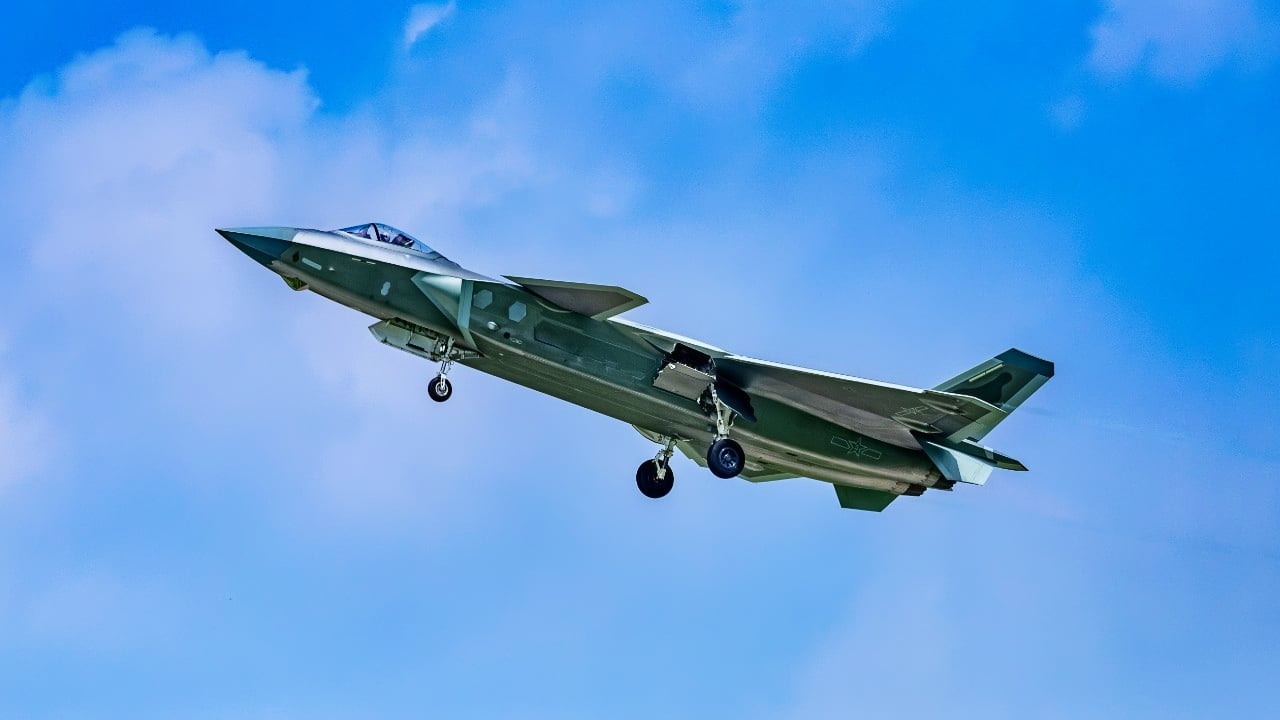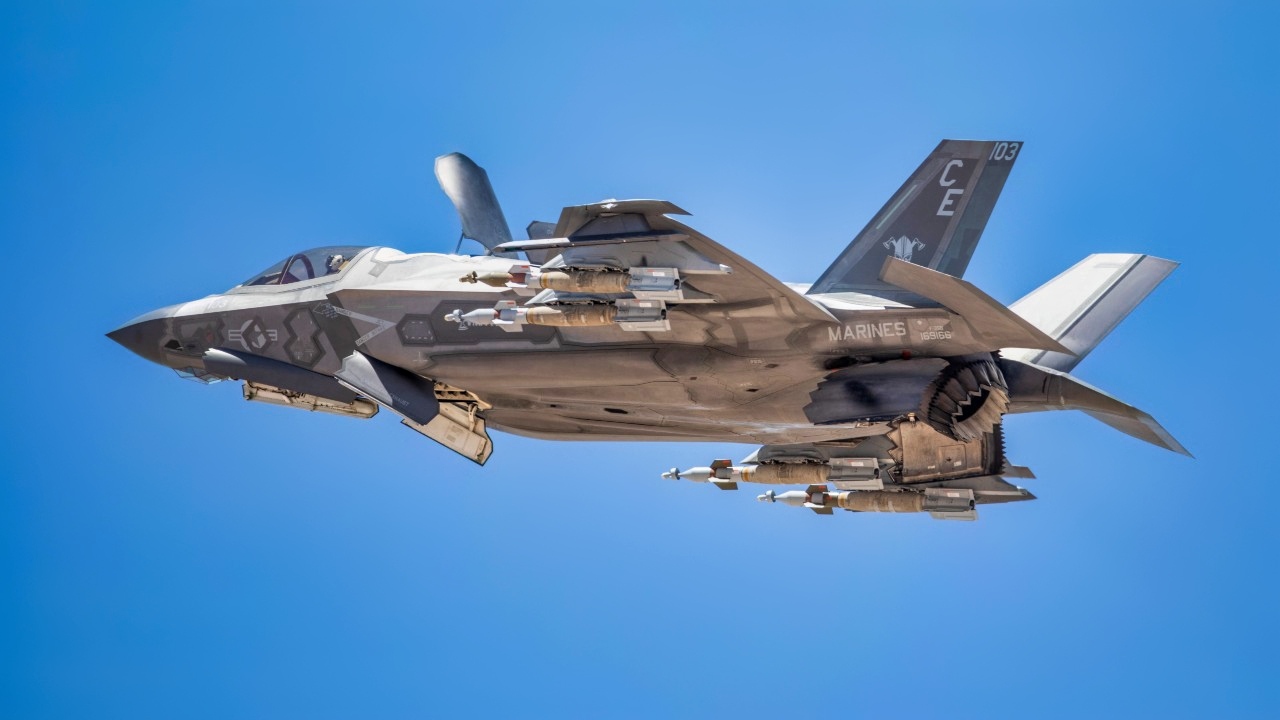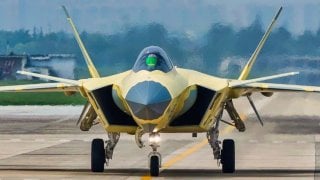The U.S. Air Force's J-20 Stealth Fighter Dilemma
China's rapid expansion of its J-20 "Mighty Dragon" stealth fighter fleet is raising concerns about the airpower balance in the Pacific.
What You Need to Know: China's rapid expansion of its J-20 "Mighty Dragon" stealth fighter fleet is raising concerns about the airpower balance in the Pacific.

-As of 2024, China has 12 J-20 brigades, a sharp increase from just 40 aircraft in 2022. Meanwhile, the U.S. is facing challenges with the rising costs and delays in its F-35 program, and the premature cancellation of the F-22 program limits America's deployed fifth-generation fleet.
-While the J-20's radar stealth may be compromised by its design, its increasing numbers pose a challenge to U.S. air superiority in the region.
China's J-20 Mighty Dragon Fleet: Overtaking U.S. Capabilities in the Pacific?
The ever-growing military hostility of the People’s Republic of China (PRC) in the Indo-Pacific region, especially towards Taiwan and the Philippines, remains a never-ending source of concern for the United States of America and its allies in the area.
Well, as if there weren’t enough cause for concern already, it looks like the situation is going from bad to even worse in the category of airpower balance of power, as the PRC is growing its fifth Generation stealth fighter fleet while America’s own fifth Generation fighter fleet is spinning its proverbial wheels stuck in neutral. The National Interest now examines this latest disturbing development in further detail.
The Basics
The story comes to us from an October 14, 2024 article in Asia Times, “this month, defense resource Janes reported that China’s People’s Liberation Army-Air Force (PLAAF) has rapidly expanded its fleet of Chengdu J-20 ‘Mighty Dragon’ fifth-generation fighters, with twelve air brigades equipped as of May 2024…Janes notes this marks a sharp increase from just forty aircraft in early 2022, with over seventy inducted in the past year alone, judging on assessments made from recent satellite imagery.”
Note: “Mighty Dragon” is the translation of the Mandarin Chinese word “Weilong.” Meanwhile, the NATO reporting name for the J-20 is “Fagin,” a la the thief from Charles Dickens’s Oliver Twist.
How and Why Is This Happening?
Meanwhile, America’s stealth fighter fleet is getting left in the dust, at least in terms of deployed numbers in the region. As Asia Times notes:
“The U.S. is struggling with soaring costs and modernization delays for its comparable F-35 program, potentially shifting the balance of air power in China’s favor in the Pacific…While the report says that while about 630 F-35s are currently in service, with plans to acquire approximately 1,800 more, projected sustainment costs have risen from $1.1 trillion in 2018 to $1.58 trillion in 2023, partly due to efforts to extend the aircraft’s service life to 2088…Although the report mentions efforts to reduce costs, such as improving parts’ reliability and maintainability, which have saved an estimated $84 billion, repair times remain slow, reducing the jets’ availability for missions.”
What about the F-22 Raptor, you may reasonably ask?
Well, it certainly doesn’t help that then-U.S. Secretary of Defense (SECDEF) Bob Gates killed the Raptor program back in 2011 after a mere 187 were built. For more damning details of Mr. Gates’s shortsightedness, read the 2015 book Air Power Abandoned: Robert Gates, the F-22 Raptor and the Betrayal of America's Air Force by the late Robert F. Dorr.
Quantity vs. Quality: J-20 vs. F-35
Now, lest the situation appear to be pure gloom & doom for the U.S. and concurrent pure sunshine & rainbows for China, it should be noted for the sake of fairness & balance that there’s more to the picture than mere sheer numbers of airframes. There’s also the issues of quality as well as quantity, and though there is a fair amount of truth to Joseph Stalin’s alleged, and most likely apocryphal, statement that “Quantity has a quality all its own,” that partial truism only goes so far.

For one thing, as I noted in an article for Simple Flying earlier this year, the F-35 has a true comparative advantage over its Chinese adversary/counterpart in terms of true stealth capability, in other words, relative invisibility to radar.
You see, Lockheed Martin’s Lightning II has a significantly smaller radar signature, whilst Chengdu’s designers, in their infinite wisdom, yes I’m using a wee bit of sarcasm here, decided to place spike-like canards on the forward area of the fuselage which could conceivably compromise that oh-so-important invisibility factor, which after all is the whole raison d'etre of stealth technology in the first place, n’est-ce pas?
Retired U.S. Air Force (USAf) Colonel John "JV" Venable, former commander of the Thunderbirds, former Senior Research Fellow for Defense Policy at the Heritage Foundation, and now Senior Resident Fellow for Airpower Studies at the Mitchell Institute for Aerospace Studies recently put it, “the J-20, in my estimation, would be dead long before it could maneuver against either the F-22 or the F-35. It’s got enough spikes on it to where the radar returns on it are likely to be much more significant, which means that the F-22 and the F-35 can see it a lot farther away.”
About the Author:
Christian D. Orr is a Senior Defense Editor for the National Security Journal (NSJ). He is a former Air Force Security Forces officer, Federal law enforcement officer, and private military contractor (with assignments worked in Iraq, the United Arab Emirates, Kosovo, Japan, Germany, and the Pentagon). Chris holds a B.A. in International Relations from the University of Southern California (USC) and an M.A. in Intelligence Studies (concentration in Terrorism Studies) from American Military University (AMU). He has also been published in The Daily Torch , The Journal of Intelligence and Cyber Security, and Simple Flying. Last but not least, he is a Companion of the Order of the Naval Order of the United States (NOUS).
Image Credit: Creative Commons and/or Shutterstock.


